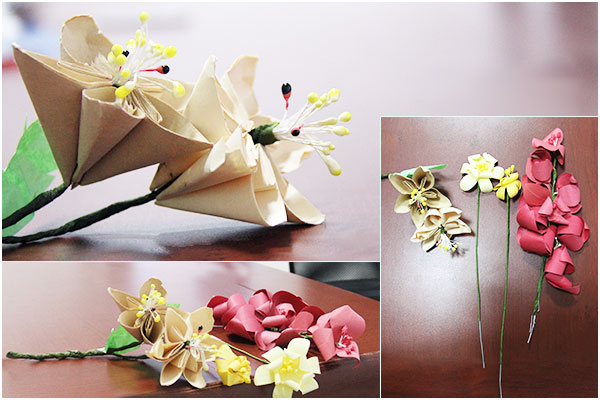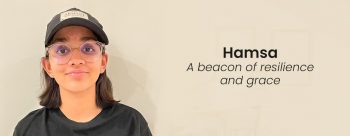Travelling to our beneficiary schools to meet the children we serve is one of the best aspects of the job, for those of us who work at Akshaya Patra. The energy and enthusiasm of our young beneficiaries are infectious and I must admit, a feeling of nostalgia and wistfulness follows after we leave the schools, longing for days past when we too were without a care in the world and had a head full of dreams. Recently, I travelled to Nagpur to meet the Foundation’s beneficiaries and the experience was enriching and eye-opening.
My colleagues and I at the Foundation visit different cities across India to talk to our beneficiaries about their dreams, ambitions, what their school life is like and how they like the food served by the Foundation. This helps us connect with our beneficiaries on a personal level and gives us a chance to offer a slice of their lives to the world – their determination to study well and make a bright future for themselves.
Nagpur has recently come into the Akshaya Patra fold, as our kitchen there was inaugurated just last year, in August 2016. I spent five days in the city, visiting four government schools, where we serve our meals. These were the Deaf and Dumb Industrial Institute in Shankar Nagar locality, Shivangaon Marathi Prathamik Shala (Shivangaon Marathi Primary School) in the Shivangaon village on the outskirts of the city, Nishatai Wankhede Uchcha Prathamik Shala (Nishatai Wankhede Higher Primary School) in Kamla and the Dr Ambedkar Secondary School and Junior College in the Untakhana area.
What struck me most about Nagpur is that children in government schools come from families that are relatively well-off. There is no dearth of employment in the city and the parents are diligent, ensure that their children’s educational journey is as smooth-sailing as possible and take care to make available the resources they need for the same.
The Deaf and Dumb Industrial Institute, the first school I visited, was a unique experience. Quietness envelops the school and the sounds one hears on its campus come either from nature or the pattering of feet. Here, the first student I met was a boy named Prem, who was about 14 years old. He had been found on Nagpur’s railway station, unable to communicate anything because he was deaf and mute. The name Prem was given to him by the policeman who found him. The teachers said that they were teaching him sign language, which was difficult as they had no way of knowing if they were getting through to him. Most of their teaching was done through trial-and-error method, for this reason. He had also been diagnosed to be slightly mentally challenged.
The other students we met in the Deaf and Dumb Industrial Institute were extremely lively, but lacked much ambition, because they had never been encouraged to dream big, due to the perceived limitations of their condition. However, success stories do exist amongst them. One of this school’s former students, Mangesh Wankhede, now works at Indian Space Research Organisation (ISRO), the teachers told me. Another is doing his Bachelors in Engineering (BE). They just need a great deal of encouragement and familial support to pursue conventional careers. When my colleagues and I were taking leave of the teachers and the students at this school, they gave us beautiful, colourful, paper flowers handmade by the students.

At the other schools, most of the students we met wanted to be either policemen/policewomen, doctors or engineers. One student though, wanted to be President of India! However, he had no answer to questions like ‘who is the current President of India?’, ‘who’s the current Prime Minister?’. He probably wanted to impress his classmates, teachers and visitors with a unique answer. We did meet children with unconventional, unique ambitions too – one wanted to be an air force pilot, another a cricketer, yet another an astronomer and one young man, inspired by the hit TV show CID, wanted to become an investigative officer, his inspiration being the character Daya, of “Daya, Darwaza todo!” (“Daya, take down the door!”) fame.
A common observation across these schools, that touched us deeply, was the dedication and love the teachers have towards their students. In two of the schools, teachers pooled in money from their own pockets to make certain amenities available to the children. The children too, had a great deal of respect and affection for them and the bond they shared was beautiful. It was also great to know that all the children unanimously liked the food served by Akshaya Patra and many confessed to preferring it over the food cooked at their homes. The masale bhaat we served there seemed to be a favourite of many of our beneficiaries in the city.
No account of my trip there would be complete without a mention of the wonderful staff – administrative as well as kitchen staff – working for Akshaya Patra Nagpur. The hospitality of people in Nagpur is renowned – they are happiest when feeding people. One of our employees there told me, “If one’s hunger isn’t satisfied in Nagpur, he/she can’t feel full anywhere else.” They take care of each other as diligently as they prepare meals for the children in the city and lunch time is particularly special, as they share their dabbas (tiffins) with each other, with much cheer.
The warmth of teachers and students, along with that of the wonderful people working at Akshaya Patra Nagpur, was truly moving. One can fully understand the power of the Mid-Day Meal Programme when one visits beneficiary schools and experiences the joys of childhood and aspirations of the children, which get much-needed support, all thanks to a nutritious school lunch every day.







